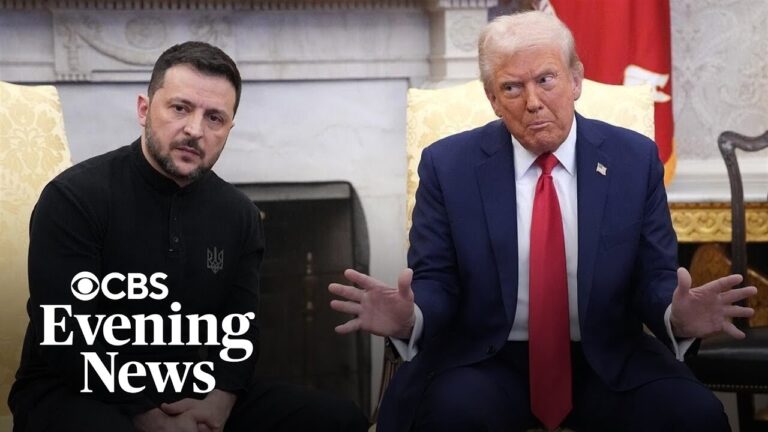Video at the bottom!
Tonight, a significant development has unfolded from the White House regarding the ongoing conflict in Ukraine. In a meeting with NATO Secretary General, President Trump unveiled a new strategy aimed at bolstering Ukraine’s defense capabilities by supplying arms. The U.S. plans to manufacture and deliver weapons to NATO allies, who will then finance these arms and facilitate their distribution to Ukraine.
President Trump expressed that he believed he had reached agreements with Russian President Vladimir Putin to halt his offensive against Ukraine on multiple occasions; however, he noted that Putin consistently reneged on those commitments.
In a discussion about sanctions, CBS News Senior National Security Correspondent Charlie D’Agata provided insight into what are being termed secondary tariffs. The proposed sanctions would impose a 100% tariff on countries that continue their trade relations with Russia, such as China, India, and Brazil, which still purchase oil and gas from Russia at significantly discounted prices. This revenue is, according to D’Agata, effectively supporting Russia’s military efforts. Despite the extensive sanctions already levied against Russia since the inception of the war, they have not changed Putin’s stance. These new tariffs are intended to exert greater pressure on Russia, although immediate effects may be limited due to Russia’s substantial military resources.
On the topic of weaponry, President Trump emphasized that Ukraine would receive “top-of-the-line” arms, specifically highlighting the Patriot air defense systems. These systems, known for their ability to intercept ballistic missiles, surpass any current capabilities within Ukraine’s arsenal. The U.S. has previously deployed these systems effectively, including in defensive operations against missile threats from Iran.
Trump noted that there are approximately 17 Patriot systems in Europe that could be rapidly deployed to Ukraine. This addition would enhance the defense of key Ukrainian cities like Kyiv and Kharkiv, while also potentially allowing for a more forward positioning to protect Ukrainian forces in combat situations.


